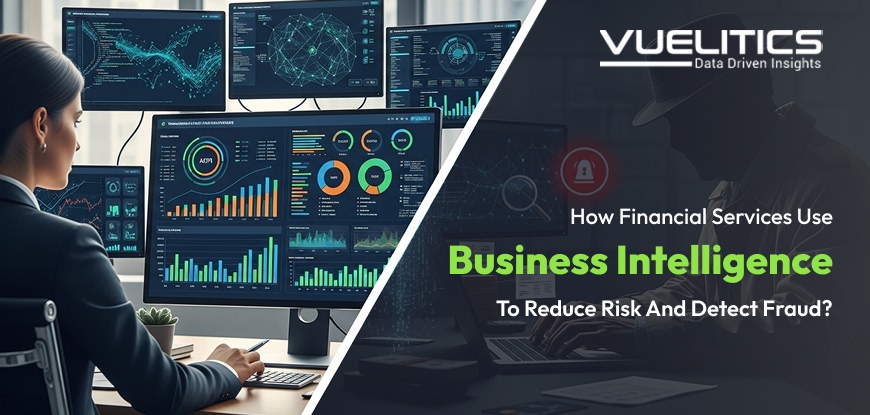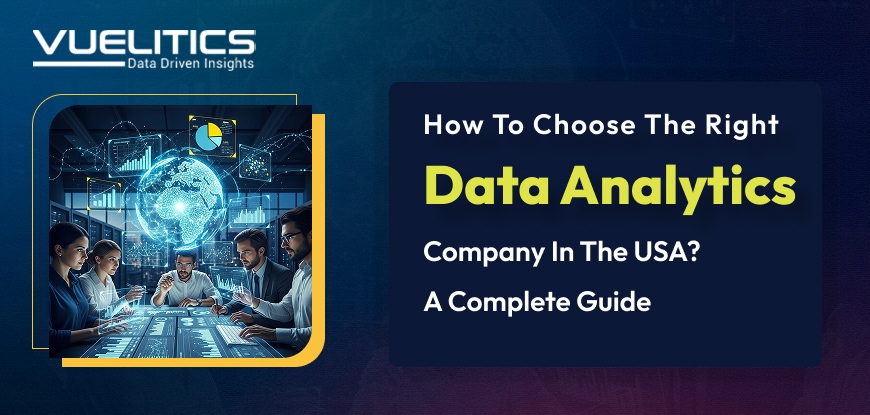- Home
- Blogs

How Financial Services Use BI To Reduce Risk And Detect Fraud?
Risk and fraud are still both top issues for banks, insurance companies and investment houses in financial services’ story with a digital twist. What’s true, however, is that the number of financial transactions happening online increases at an exponential rate, and with it, so does the level of sophistication behind fraudsters seeking to steal it. And this is exactly where Business Intelligence (BI) in financial services steps in. With analytics, data visualization and predictive modeling working together, BI can provide financial companies actionable insights to detect fraud earlier in the process so they can reduce operational risks and improve compliance.
What is Business Intelligence in Financial Services?
Business Intelligence definition in financial services Business Intelligence for Finance is an integrated system that leverages data, software tools and analytic performance to provide a structure for business information that is used in decision-making. BI helps bank aggregate data from various sources,for example: transaction histories, customer interactions and market feeds, looking for patterns, detecting anomalies and assessing financial risk.
With finance BI dashboards, decision-makers are able to see cash flow trends, credit exposure risks or opportunities, loan performance and customer activity in real time. Such cognition not only improves visibility but also offers the ability to make fast and well-informed responses against identified threats or suspicious activities.
BI in Financial Risk Management
Risk is inherent in all financial undertakings. Each loan disbursed, investment made or transaction processed brings with it a possible risk, be it market-related, credit-based or operational. Using BI to manage risk thereby allows firms in the finance sector to predict these risks before they grow uncontrollably.
With the use of monetary big data analytics, banks and insurers are able to conduct financial risk analysis in different fields:
- Credit Risk: Credit risk is calculated on the basis of borrower profiles and payment history by BI tools for identifying their default probabilities.
- Market Risk: Analytics track market volatility, currency fluctuations, and investment exposures to guide portfolio decisions.
- Operational Risk: BI systems identify inefficiencies or irregularities in internal processes, reducing the chance of human error or procedural lapses.
BI-driven risk management helps organizations create proactive strategies rather than reacting to problems after they occur. It provides a solid BI foundation to reduce risk while staying in compliance with regulations and keeps the institution and its customers safe.
Fraud Detection Using Business Intelligence
Financial fraud used to be about a straightforward con: thieves pretending to be trapped Nigerian princes, convincing the gullible to part with their cash in exchange for facilitating fictitious massive wealth transfers. Manual detection and prevention of such mishaps is no more viable. That is why utilizing business intelligence for fraud detection has become one of the most serious concerns.
With data-driven fraud detection, BI tools analyze massive volumes of transaction data in real time to identify unusual behaviors or anomalies. For instance:
- A sudden surge in fund transfers from one account.
- Deals were completed in several geographies in short order.
- Changes in a customer’s spending profile.
Banks can predict catastrophic levels of fraud before it occurs through the use of predictive analytics in banking. These predictive models rely on historic and behavioral data to automatically flag high-risk accounts or transactions.
Also, BI for fraud detection is combined with real-time analytics in the financial sector so that it can alert immediately and respond swiftly. This constant surveillance reduces the impact of financial sinkholes and formulates a better customer trust.
Fraud Prevention Through Data Analytics
Logging is important, but it’s the monitoring and possibly some prevention that’s key. Data analytics as a means of fraud prevention is primarily centered on improving internal system infrastructure and protocols by using BI derived knowledge. Through continuous monitoring, organizations can:
- Spot transaction workflow vulnerabilities.
- Monitor and control staff to prevent internal fraud.
- Create fraud risk scores for customers and vendors.
- Automate approval processes with strict data governance.
Advanced data governance in banking ensures that data quality, privacy, and security are maintained at every stage. BI-based fraud prevention models also involve machine learning and AI-powered analytics, meaning that they become more effective the more they’re used—over time offering increasing amounts of accuracy and fewer false positives.
If a credit card user always spends in a particular range, then BI systems could flag the spending as unusual, for example, if a big-value purchase is made in a foreign country. This allows the bank to freeze the transaction and authenticate it with the account holder.
Compliance Reporting and Regulatory Monitoring
There are very strict rules around financial compliance. Regulators require transparency in transactions, risk disclosures and audit trails. Automated dashboards and customized reports declutter this obligation with BI Compliance reporting.
In this context, compliance business intelligence can help organizations to:
- Consolidate data for regulatory audits.
- Generate real-time reports for bodies such as the SEC, FINRA, or RBI.
- Comply with AML and KYC policies.
- Monitor and correct compliance violations early on.
AI-powered compliance solutions help FSOs maintain accuracy and consistency in reporting while streamlining the administrative overhead of manual reporting. This fosters accountability and the soundness of regulation.
Real-Time Analytics and Decision-Making
Real-time analytics in financial services is a must-have in today’s competitive industry. Whether they need to spot fraud, ensure liquidity or monitor investments, real-time business intelligence gives the pros immediate data-driven sources of good judgment.
BI platforms integrate with various data sources—like payment gateways, CRM solutions or ERP systems—to provide a consolidated perspective on your business. It enables business leaders to respond quickly to those emerging threats or opportunities.
Real-time BI also supports dynamic financial data analytics, allowing leaders to run “what if” scenarios in order to see how potential decisions could unfold before they make a strategic decision. Given that time equals money in any industry, organizations that can move with such dexterity have a huge competitive advantage.
Benefits of BI in Finance for Risk and Fraud Management
When applied in finance, BI offers concrete advantages that extend beyond simple data visualization:
Risk Early Warning: A proactive measure to identify potential losses or credit defaults.
- Improved Fraud Detection Accuracy: Machine learning models increase the rates of fraud detection.
- Accelerate Decision Making: The instant capacity to process and visualize data, empowering direct action by executives.
- Compliance: Automated reports let you comply with financial regulations.
- Cost Savings: Stopping fraud and limiting risk lowers operational and financial expenses.
- Greater Customer Trust: Real-time fraud prevention creates transparency and trust in the brand.
Consolidating data sources on one BI platform empowers financial institutions to drive performance and protect operations from the threat of risk and fraud.
Conclusion
In an increasingly dynamic financial reality, Business Intelligence in financial services is not only a technology escalation—it is a strategic imperative. As cyber-crime, data breaches, and market volatility continue to escalate, BI serves as the analytic basis for financial risk analysis, fraud detection based on analytics beyond rules-based or other intuition-driven approaches and regulatory compliance.
With predictive analytics in banking combined with real-time BI dashboards, financial institutions have the visibility to be able to act fast and not wait for a potential disaster. The outcome is a safe, transparent, and intelligent financial system. One that reduces risk, anticipates fraud before it happens, and extends trust over the long term to consumers and regulators.



Post Comments